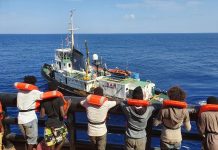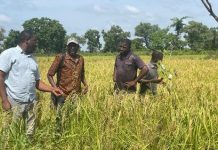By Rohey Jadama The Kanifing Municipal Council (KMC) has recently organised a meeting with stakeholders to unveil its Contingency Plan for disaster prevention and management in the Municipality. As the rainy season has already commenced, this initiative is said to be an attempt to prepare a contingency plan to address any eventual rain related disaster, especially in the flood prone areas within the Municipality. In order to shed more light on this Contingency Plan, Foroyaa had an interview with Mr. Ngange Jeng, the Disaster Management Coordinator of the Kanifing Municipality who explained the state of preparedness to preempt or address any disaster caused by the rains. Foroyaa: Recently, last week to be precise, the KMC organized a meeting with stakeholders on a Contingency Plan to address disaster related issues in the Municipality. .Can you tell our readers what this contingency plan entails in terms of activities, implementation and expected outcome? Mr. Jeng: The Contingency Plan was developed with funding from the European Union (EU) through the World food Program (WFP). It is basically a plan that we put in place to enable us respond immediately to any disaster. As a Disaster Management Committee, we have identified four major hazards within the Municipality and which are flash floods and wind storms, domestic fires, disease outbreak and industrial accident. We have also consulted the community to identify their major hazards and which are similar to the ones we identified. The reason why we are consulting the community in the process is because we want them to be involved since they are the beneficiaries. This Contingency Plan will help us to mitigate the negative effects of these major hazards within the municipality. We are prepared to respond to disaster. Q: Which areas in the Municipality are prone to flooding and what specific measures do you have in place to address the eventuality of rain related disasters? Mr. Jeng: All the areas in the Municipality are prone to flood, but the worst places are Manjai Kunda, Dippa Kunda, Ebotown, Tallinding Farokono, Bundung Borehole, Abuko and Fajikunda. The contingency plan is part of the measures to address these problems and we also do sensitization programmes in the form of a Talk Show on Star FM Radio. Q: What plans do you have in terms of disaster prevention, management and relief? Mr. Jeng: We have laid all the necessary plans so that when disaster occurs, we will visit the affected area, assess the disaster through the use of a questionnaire, compile the information in the forms and then forward it to the head office. The head office will then look at the assessment forms, consult the necessary stakeholders and subsequently supply the victims with necessary items. Q: Do you have challenges or constraints in terms of the implementation of your disaster prevention, management and relief plans and, if so, what are they and how do you intend to address them? Mr. Jeng: Yes, we do face challenges and some of these are having people who settle in swampy areas and illegal dumping, We formed a task force to go round to see the illegal dumpsites and those settling in areas prone to flood. We are trying to create more collection points and discourage people from settling in swampy areas. Q: Apart from the blocking of original waterways or paths by the erection of buildings and walls, you also have the problem of the lack of a proper drainage system in some of these areas that are prone to flooding as well as blockages in the existing gutters. What are you doing to address the problem of lack of drainage and clogged gutters that need clearing? Mr. Jeng: We have plans to address these problems. Last month, we organised a cleansing exercise in two different locations from Elton Fajikunda to Tabokoto and from Churchill Town to Serrekunda clearing the gutters. Almost 90% of the rubbish in the gutters is sand and plastic. The size of the gutters is too small to contain water when it rains and the Disaster Committee and KMC are working collectively to increase the size of the gutters so that water can pass through them freely. Q: What message do you have for the other stakeholders, including the members of the community especially those living in disaster or flood prone areas in the Municipality? Mr. Jeng: I would like to thank all the stakeholders for their active participation in the development of the Contingency Plan. I would also like to urge the people residing in flood prone areas to evacuate before they will experience the same problem again. Foroyaa: Thank you for granting us the interview. Mr. Jeng: It’s a pleasure. ]]>
We are prepared to respond to disaster Says KMC Disaster Management Coordinator
Facebook Notice for EU!
You need to login to view and post FB Comments!


















